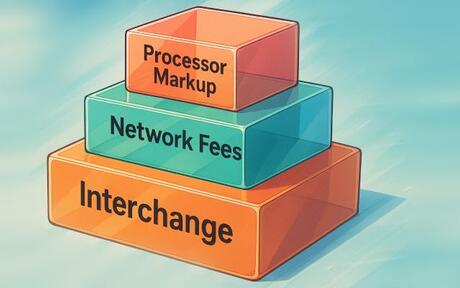Accepting electronic payments and credit cards is non-negotiable for nearly every modern business, especially those operating online. A merchant account is the essential behind-the-scenes component that allows your business to process these transactions. For many, the idea of applying for one can seem daunting, but by understanding the process and being prepared, you can significantly increase your chances of approval.
This guide will walk you through everything you need to know about securing a merchant account, whether you're a startup, an established e-commerce store, or even a business in a high-risk industry.
What Underwriters Look For: Getting Your Business Ready
When you apply for a merchant account, the provider's underwriting team will assess your business to determine the level of risk involved. This process is crucial for their decision to approve or deny your application. They typically evaluate several key factors:
- Business Stability & History: How long have you been in business? Do you have a track record of operations? Newer businesses, or startups, will need to present a strong business plan and financial projections.
- Financial Health: Your business bank statements and financial history provide insights into your cash flow and ability to manage potential chargebacks.
- Personal and Business Credit: Underwriters will perform a credit check on both you (as the business owner) and your business entity. A healthy credit score demonstrates reliability.
- Industry Type: Certain industries are inherently considered high-risk due to higher chargeback rates, regulatory complexities, or industry reputation. We'll dive into this more below.
- Website & Operational Transparency: For e-commerce stores, a professional, fully functional website with clear terms of service, privacy policies, and contact information is vital.
Being proactive and addressing these areas before you apply can make a world of difference.
Essential Documents and Information You'll Need
Getting your paperwork in order is the first critical step toward getting approved for a merchant account. Having these documents ready will streamline the underwriting process:
- Business Information:
- Your legal business name and any "Doing Business As" (DBA) names.
- Complete contact information (address, phone, email).
- Your Employer Identification Number (EIN) or Tax ID number.
- Your business license or registration documents.
- Financial Statements:
- Typically, the most recent three months of business bank statements. These show transaction volume and cash flow.
- If you're a startup with limited history, you might need to provide personal bank statements or a robust business plan with financial projections.
- Bank Account Details:
- Your business bank account and routing numbers. This is where your processed funds will be deposited.
- Processing History (If Applicable):
- If you've previously accepted credit card processing, provide statements or details from your past provider. This demonstrates experience and a history of managing transactions.
- Website & Product/Service Details (Especially for E-commerce):
- A live, functional website (for online businesses).
- Clear descriptions of the products or services you offer.
- Refund, return, and cancellation policies clearly displayed.
Crafting a Winning Application: Beyond the Forms
Beyond just submitting documents, adding a personal touch and clear explanations can significantly boost your application, particularly for new or unique business models.
- Write a Personal Cover Letter: This is your opportunity to "sell" your business. Explain what your business does, your mission, and why you're seeking a merchant account. Highlight any unique strengths, your business model's sustainability, and your commitment to customer service. For startups, this letter can convey your vision and projected growth.
- Explain Your Business Model Clearly: Don't assume the underwriter understands your niche. Whether you're an e-commerce store selling handmade goods, offering mobile credit card processing services, or using a virtual terminal for remote sales, articulate your operations. If you're deciding between a virtual terminal vs. POS system, explain which one you plan to use and why it fits your business.
- Address Potential Concerns Upfront: If your business might be perceived as higher risk, proactively explain your risk mitigation strategies. For instance, how do you handle returns? What are your fraud prevention measures?
Navigating High-Risk Merchant Account Approval
Certain industries face more scrutiny due to higher chargeback rates, regulatory environments, or brand risk. These include, but are not limited to, adult entertainment, CBD, kratom, nutraceuticals, online gaming, travel, and online pharmacies. If you operate in one of these areas, seeking an adult entertainment merchant account, a CBD merchant account, or any other high-risk merchant account, be prepared for a more thorough review.
Key tips for high-risk businesses seeking approval:
- Transparency is Key: Be completely upfront about your business operations. Hiding details will lead to immediate denial.
- Demonstrate Stability: Show strong financial health, even if your industry carries higher perceived risk.
- Robust Compliance: Highlight your commitment to all relevant regulations, whether it's PCI compliance for small businesses or specific industry regulations (e.g., HIPAA compliance for telemedicine).
- Chargeback Mitigation Plan: Outline specific strategies to prevent and manage chargebacks, which are a major concern for high-risk processors.
Understanding Payment Models & Compliance
While this article isn't about merchant account comparison, it's helpful to know that providers offer various pricing models, like interchange-plus pricing. This model separates the fees charged by the card networks (interchange) from the processor's markup, offering transparency that underwriters appreciate seeing you understand.
Additionally, regardless of your business type, PCI compliance for small businesses isn't optional. Ensuring your systems and practices protect cardholder data is a fundamental requirement. Be ready to discuss how you maintain a secure processing environment.
Submit and Wait for Approval
Once you've gathered all your documents, completed your application, and written your compelling cover letter, it's time to submit everything to your chosen merchant account provider. They will then conduct the credit checks and underwriting review.
While waiting can be the hardest part, knowing you've submitted a complete and well-prepared application will give you peace of mind. By following these steps, you significantly increase your chances of approval and set your business up for success in accepting electronic payments.
Get a quick recommendation
Are you already processing credit card payments?




